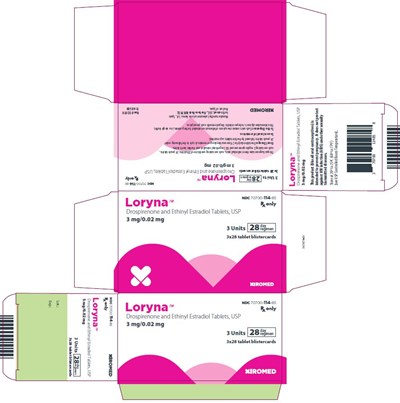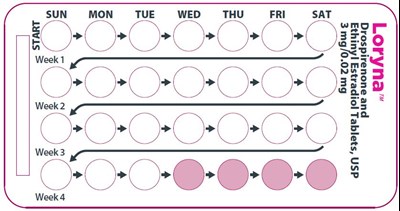Product Images Loryna
View Photos of Packaging, Labels & Appearance
Product Label Images
The following 8 images provide visual information about the product associated with Loryna NDC 70700-114 by Xiromed, Llc., such as packaging, labeling, and the appearance of the drug itself. This resource could be helpful for medical professionals, pharmacists, and patients seeking to verify medication information and ensure they have the correct product.
loryna figure 01
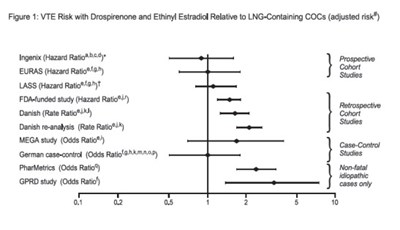
Figure 1 shows the comparative VTE risks associated with Drospirenone and Ethinyl Estradiol versus LNG-Containing COCs, based on the adjusted risk. The text also lists different studies conducted by various research organizations and their corresponding hazard ratios or odds ratios, along with the study design. The language used in the text indicates that it is related to medical research.*
loryna figure 02
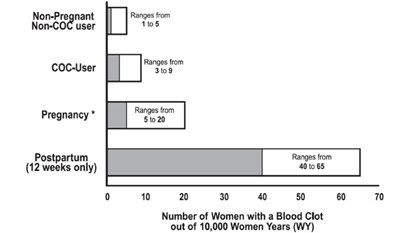
This text represents a table showing different ranges for the occurrence of blood clots in women depending on their contraceptive method and pregnancy status. The table shows that non-COC users have a lower range (18) while COC-users have a higher range (3109). Women who have been postpartum for 12 weeks have a higher range (401065). The last row shows the number of women who experienced blood clots out of 10,000 women years, which is 70.*
loryna figure 03
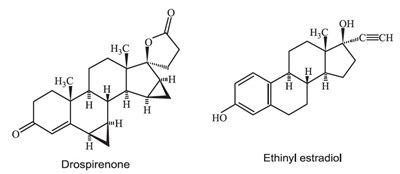
Ethinyl estradiol and Drospirenone are two common ingredients found in combined hormonal contraceptives. Ethinyl estradiol is a synthetic form of the hormone estrogen, and Drospirenone is a synthetic form of the hormone progestin. Together, they work to prevent pregnancy by suppressing ovulation, thickening cervical mucus to prevent sperm from reaching an egg, and thinning the lining of the uterus to make it less hospitable to a fertilized egg. These ingredients are often found together in birth control pills and patches, and are also used to treat other conditions such as acne and hormonal imbalances.*
loryna figure 04
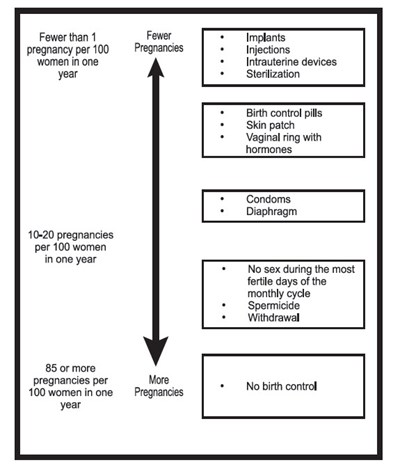
This text provides information on different types of contraceptives and their effectiveness in preventing pregnancy. The text categorizes different methods like injections, intrauterine devices, sterilization, birth control pills, condoms, diaphragm, spermicide, and withdrawal. It also provides statistics on the number of pregnancies per 100 women in one year for three different categories: fewer pregnancies, more pregnancies, and 10-20 pregnancies. The text suggests that contraceptives are essential for preventing pregnancies, and it's better to choose a method based on its efficiency.*
loryna figure 05
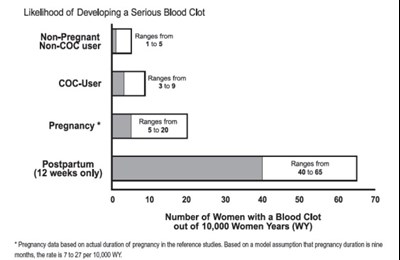
This is a table presenting the likelihood of developing a serious blood clot among non-pregnant women, non-cOe users, and cOoC-users, as well as among pregnant women and postpartum women (up to 12 weeks only). The numbers represent the number of women with a blood clot out of 10,000 women years (WY). The information about pregnancy is based on a calculation of the incidence of blood clots during pregnancy and assumes a gestation duration of more than six months at a rate of 71027 per 10,000 WY.*
* The product label images have been analyzed using a combination of traditional computing and machine learning techniques. It should be noted that the descriptions provided may not be entirely accurate as they are experimental in nature. Use the information in this page at your own discretion and risk.
